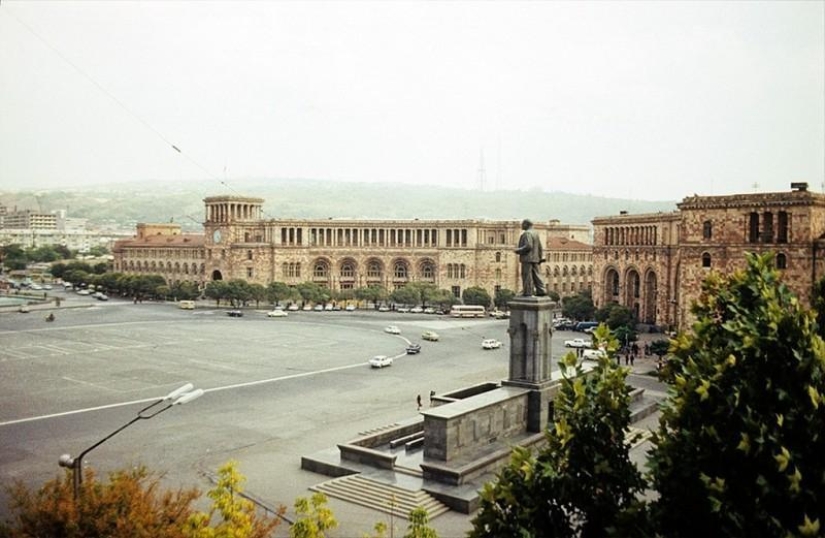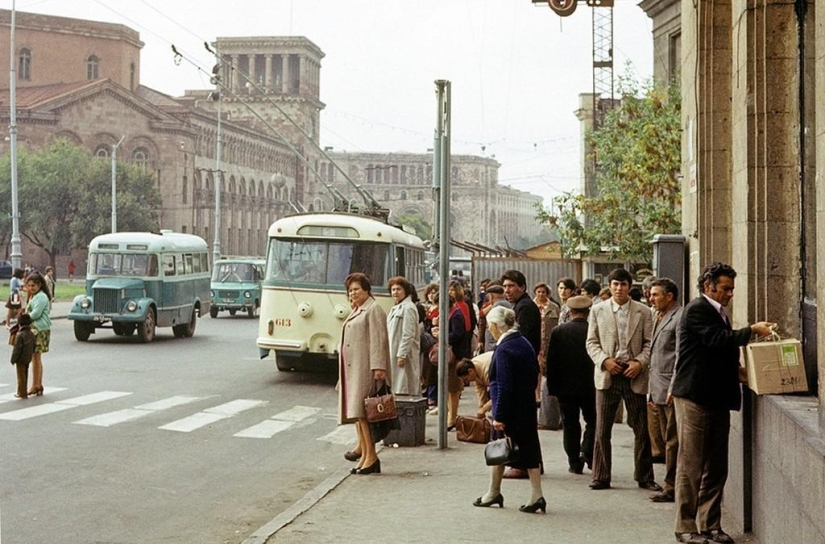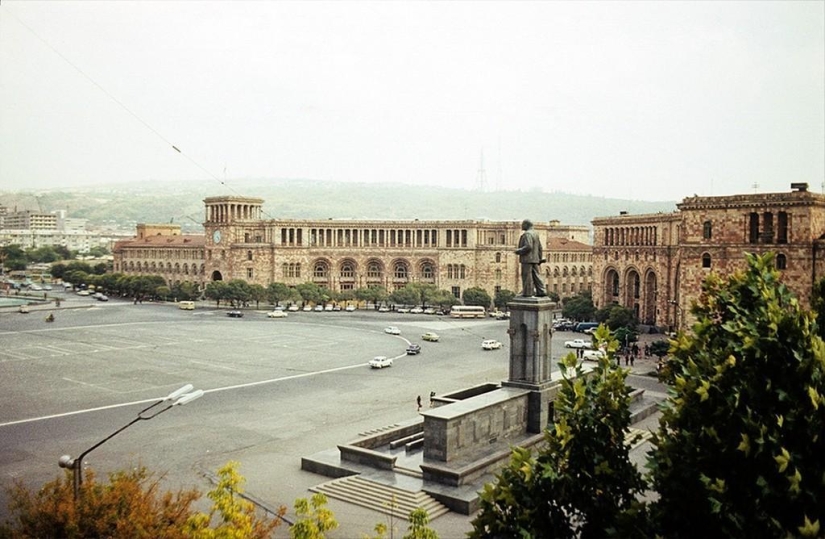Soviet Yerevan
Yerevan is considered one of the oldest cities in the world. The year of its foundation is considered to be the year of the foundation of the Urartian city of Erebuni - 782 BC, located on the southern outskirts of modern Yerevan, although there is no data indicating the existence of a significant settlement at the location of the city in the period from the IV century BC to the III century AD.

However, very few traces of this antiquity remain. Despite the status of the provincial capital, pre-revolutionary Erivan retained the appearance of a poor provincial-eastern city, with one- or two-story adobe houses, narrow crooked streets. The Serdar Palace and the fortress lay in ruins. Therefore, the capital of Soviet Armenia had to be built anew, "turnkey".
Soviet urban planners had the opportunity to carefully consider the layout and images of architectural ensembles, but Yerevan belongs to those cities where architecture is secondary, and geography, natural landscape is primary. The main attraction and symbol of Yerevan is the majestic Ararat rising on the horizon, for which the entire urban development is just a background.

Yerevan was the first city in The Soviet Union, for which a Master Plan was developed.

The master plan, authored by Academician Alexander Tamanyan, was approved in 1924: it was designed for 150,000 residents. During the time, the administrative territory has increased by 5 times.
Construction began: Yerevan was built up with basalt, granite, marble. The most common building material was pink tuff. And since this building material gave the city a peculiar colorfulness and a special shade, Yerevan began to be called the "Pink City".
After the collapse, Lenin Square was renamed Republic Square. According to Wikipedia, "the center of the architectural ensemble of the city is Republic Square (1924-1958). The shape of the square is formed by 5 buildings: the building of the National Historical Museum of Armenia, the Government Building of Armenia with the main clock of the country on the tower, the Central Building of the RA Post Office, the Marriott Armenia Hotel, the building of the Ministry of Foreign Affairs and Energy. In front of the building of the Armenian History Museum there are legendary "singing" fountains, simultaneously changing their color." But this is already in our days.
Tamanyan is the father of modern Yerevan. According to Wikipedia, under the Soviet regime, a large-scale reconstruction of Yerevan begins, carried out since 1924 according to the project of A. O. Tamanyan, who developed a special national style using elements of traditional church architecture and tufa as a building material. During this reconstruction, the city completely changed its appearance; almost all previously built buildings were destroyed (including the fortress, whose stone went to the lining of the embankment, the Sardar palace, almost all churches and mosques). New streets were laid, Yerevan was electrified, water supply and sewerage were carried out. The forest plantations on the surrounding hills have done away with the dust storms that were the scourge of old Erivan.
In conclusion, one more quote from Wikipedia: "Today Yerevan is significantly transformed every day and acquires the appearance of a modern European capital with national characteristics. Construction in the city is taking on a global scale, changing the city beyond recognition. A new Northern Avenue has been built, modern point and district buildings are being built throughout the city, many foreign embassies and consulates have been created in the city, Yerevan is gaining political and economic power, spreading its cultural, political and economic influence far beyond the borders of the Republic of Armenia"…
